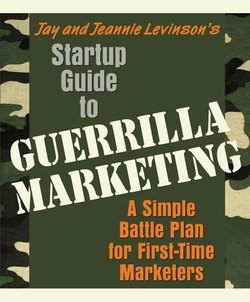Читать книгу Startup Guide to Guerrilla Marketing - Jay Levinson Conrad - Страница 37
На сайте Литреса книга снята с продажи.
Close
ОглавлениеDespite the importance we have attached to the contact and the presentation, we still reiterate that all the marbles are in the close. Effective salespeople and canvassers are effective closers.
Aim to be a dynamite closer and your income will reflect this. To close effectively, try to close immediately, rather than in a week or so.
Review the tips here and note how frequently you utilize the techniques.
• Always assume that your prospective customer is going to do what you want, so you can close with a leading question such as, “Will it be better for you to take delivery this week or next week?” “Do you want it in gray or brown?”
• Summarize your main points and confidently end with a closing line such as, “Everything seems to be in order. Why don’t I just write up your order now?”
• Ask the customer to make some kind of decision, and then close on it. Typical points that must be agreed upon are delivery date, size of order, and method of payment. A good closing would be: “I can perform this service for you tomorrow, the 8th, or the 15th. The 8th would be best for me. Which would be best for you?”
Begin to attempt the close as soon as possible by easing your prospect into it. If that time doesn’t work, try again, then again. Continue trying. If you don’t, your prospect will spend his or her hard-earned money elsewhere—and with someone else. Count on that. Remember: People like to be sold to and need to have the deal closed. They won’t make the close themselves. So you are performing a service when you sell and close.
Always be on the alert for signs that the time is right to close. The prospect will hardly ever tell you when the time has come. You must look for hints in the prospect’s words and actions. A mere shifting of weight from one foot to another may be a signal to close.
• Try to give your prospect a good reason to close immediately. It may be that you won’t be back in the neighborhood for a long time, the prospect will wish to use your product or service as soon as possible, prices are expected to rise, or you have the time and the inventory now but might not later.
• Let your prospect know of the success of your product or service with people like the prospect, with people recently, or with people in the community—people with whom the prospect can easily relate.
• Be specific with names, dates, costs, times, and benefits. Evasiveness in any area works against you.
• If the prospect likes what you say but won’t close now, ask, “Why wait?” The prospect may then voice an objection. And you may close by saying, “That’s great, and I understand.” Then you can solve the objection and close on it. In fact, one of the easiest ways to close is to search for an objection, then solve the problem, and close on it.
If you have not yet completed your presentation but feel the time may be right to close, attempt to close on the most important sales point you have yet to state. Always remember that a person knows what you want him or her to do, that there is a reason for your meeting, that your offering does have merit, and that at that moment, your prospect has your offering on his or her mind. Just knowing all these things will make it easier for you to close. When a prospect says, “Let me think it over,” that means “no.”
• If you do not close after your presentation, chances are you have lost the sale. Few prospects have the guts to tell you they will definitely not buy from you. They search for excuses. So do everything you can to move them into a position where they will buy from you. If you don’t, a better salesperson will.
• Tie the close in with the contact. Try to close on a personal note. Something like, “I think you’ll feel more secure now with this new security system, and that’s important. Shall I have it installed tomorrow or the next day?”
Guerrilla marketing involves all aspects of the way you present yourself to clients, customers, and prospects. The design of your print and online communications, the appearance and readability of your e-mail messages, the way you respond to telephone calls, and your appearance all influence your market’s perception of your competence and professionalism.
We have barely scratched the surface of what “appropriate behavior” is for guerrilla marketers. Consistently following these suggestions will take you a long way toward projecting a competent, professional identity and being the type of person prospects, customers, and clients want to be around.
It costs guerrilla marketers six times more to sell something to a prospect than to sell that same thing to a customer.
